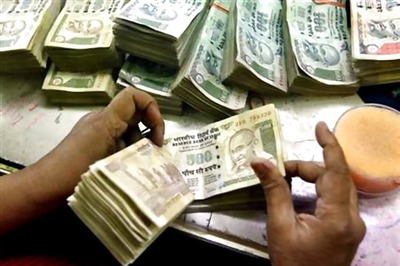
views
Through the centuries, the enticing aroma of spices lured Indian sea traders to the shores of a sprawling archipelago. Made up of over seventeen thousand islands scattered across 5 thousand kilometers, Indonesia was a land of promise that sparked the curiosity of Indian traders and merchants who came in pursuit of commercial and economic activity.
From the majestic splendour of Prambanan, the largest Hindu temple complex in Yogyakarta in Central Java, to the rich repertoire of narratives from the Ramayana and Mahabharata indelibly sewn into the ethos and folklore of Indonesia, India and Indonesia share a long cultural legacy that flourished for two millennia.
It's a country where Shah Rukh Khan remains hugely popular. If you walk around the streets of Bali, inevitably someone will ask you if you have seen Kuch Kuch Hota Hai. The soft power of Bollywood is tangible in nooks and crannies of this vast country.
In contemporary times, Indonesia is once again emerging as the glimmer of opportunity on the Indian horizon, spices being replaced by coveted natural resources. Today, a resource-hungry India, eager to boost its presence in Southeast Asia, is wooing resource rich Indonesia. The unquenchable thirst for energy has Indian companies flocking to Indonesia, infusing a new vigour into a centuries-old friendship that was fairly forgotten and neglected until the start of this decade.
"Indonesia is the flavour among Indian investors," says Swati Chopra, consumer analyst with Bank of America Merrill Lynch who covers Indonesia. "There is a lot of investment flowing into energy sectors, there are also preliminary discussions to allow access to Indian pharmaceuticals."
Housed in the same continent and separated by a short stretch of the Indian Ocean, India and Indonesia are Asia's two biggest democracies with a mosaic canvas - multiethnic, pluralistic with a religious diversity. Both countries share the demographic dividend of a large youth population. Yet, despite their geographic proximity and historical kinship, India and Indonesia looked past each other for the most part of their modern history.
India may have initiated its Look East Policy back in 1991, but Look-West remained the cornerstone of its foreign policy. Dogged by its Hindu rate of growth, preoccupied by the Cold War, Pakistan, and a war with China, India remained mired in its own problems. Consequently, Indonesia remained largely missing from India's radar.
Today, the fruits of the Look East Policy are slowly but surely ripening. For the first time in sixty years, India invited Indonesian President Susilo Bambang Yudhoyono as its chief guest for its Republic Day celebrations earlier this year. The bonhomie between the two countries is mirrored by robust investments and trade figures, with bilateral trade topping $13 billion in 2010.
Indonesia is India's second biggest trade partner in ASEAN and both countries have ambitious goals of boosting trade to US$25 billion over the next five years. Both are currently negotiating a Comprehensive Economic Cooperation Agreement (CECA) that builds on the framework of the landmark ASEAN-India free trade agreement signed in 2009. On the security front too there have been significant strides, with both signing a Defence Cooperation Agreement in 2001.
"The weight of geopolitics has asserted itself," explains Navrekha Sharma, former Indian Ambassador to Indonesia, who is writing a book on bilateral ties between India and Indonesia. "Indonesia has become stable, it has become a convincing democracy, it has managed to resolve its ethnic conflicts, it has dealt firmly with so-called 'Islamic' terrorism. Simply size, population and expanse of Indonesia makes it the undisputed leader of ASEAN. So yes, that is the country we must deal with, even in dealing with ASEAN. Our relations with Indonesia will be watched because they will set the model for our relations with other countries in ASEAN," he adds.
A view increasingly echoed in the corridors of South Block in New Delhi, which sees Indonesia as a gateway to increasing India's presence in Southeast Asia; a bedrock for successful engagement with ASEAN. The timing of India's rapprochement with ASEAN coincides with China's spreading footprint and access to the region.
To a large extent, China's rise has forced India not just to glance, but to really focus east, reflecting a strategic shift in mindset in New Delhi. The stage is being set in the balmy island of Bali, the lovely locus for the summits, not only for the traditional wayang kulith performance, but for a high-octane drama in diplomacy, with India, China, the US, Russia and ASEAN engaging in intense realpolitik.
For India, the East Asia Summit is of far-reaching significance, which is why Indian Prime Minister Manmohan Singh will head to Bali later this week where he will meet with US President Barack Obama as well as the President of the host nation, Mr Yudhoyono.
"The unspoken objective of the EAS is to keep the region from becoming overly heavy with the weight of China," says Ambassador Sharma. "China may not be the overt reason, but it is the unspoken reason, the push-factor so to speak, which has made India's presence necessary in this forum. India's objective, they say, is not to confront, but simply manage relations better within the region."
Meantime, India's enterprising entrepreneurs are fuelling the rapid pace of engagement with Indonesia by cherry picking opportunities in the country's coal, oil and gas and mining sectors. India's top firms- the Tatas, Birlas, Reliance, Essar, Jindal Steel, all have substantial investments in Indonesia. While Indian auto giants Bajaj and TVS manufacture motorcycles in Indonesia, the Tatas own 30 per cent of Indonesia's two biggest coal mines.
One of the early entrants into Indonesia's coal sector was Adani Enterprises, the flagship arm of The Adani Group, the infrastructure conglomerate that owns and operates India's largest private port Mundra. Adani, which first started exploring opportunities in Indonesia in 2004, already owns a coal mine in East Kalimantan. In a landmark deal, it recently signed a MOU with the Indonesian government for a $1.6 billion investment to construct a railway line and a port in Sumatra. Under the deal, Adani will have access to 60 per cent of the coal reserves in Sumatra.
"We are developing the local areas in Kalimantan and Sumatra, and we have the experience because of our expertise in Mundra," says Kaushal Shah of the Adani Group in Ahmadabad. "In terms of geography, Indonesia is very critical for India, it offers a great opportunity for us to import coal. Already 70 per cent of India's coal is coming from Indonesia."
The profile of Indian investments in Indonesia is becoming more diverse, with Godrej being the first consumer products company to invest in a joint venture with an Indonesian FMCG company, PT Megasari. With six manufacturing units in three locations near Jakarta, Godrej believes its Indonesian acquisition provides a key foothold in one of the largest consumer markets in Asia.
"Indonesia is a very exciting market for us with its 240 million consumers," says Naveen Gupta, Megasari's Chief Operating Officer, who spearheaded the acquisition. "Every day we touch 4 to 5 million homes with our products. Indonesia is a price-conscious market, with a modern retail trade mix. It is very similar to India, yet unique. Whenever I describe Indonesia, I say it is like India in ASEAN." Gupta, based in Jakarta, says Indians experience a cultural comfort when doing business in Indonesia. "Indonesians perform ballets from the Ramayana and Mahabharata, they draw parallels to the mythological stories from the epics and there are many Sanskrit words adapted into Bhasa. This synergy is an important factor that makes Indians feel more comfortable and less like foreigners in Indonesia."
Indian corporates and analysts point out to the remarkable resilience and strong economic fundamentals that have allowed Indonesia to rebuild itself and emerge as one of the more politically and economically stable countries in the region. Buoyed by strong domestic spending and investment, Indonesia has not only shielded itself from the crippling blows of the global recession far better than its export-dependent neighbours, Singapore and Thailand, but has come out as one of the best performing economies in the region, growing at 6.5 per cent this year.
On their part, the Indonesians are rolling out the welcome mat to Indian and Chinese companies, a change of tack from the pre-financial crisis period when Japanese and American firms dominated.
"Indian investors are more humble and adaptable," says a Jakarta-based Indonesian analyst. "There has been no major public backlash against the Indian investors, mainly because of their willingness and openness to be a minority shareholder, even in energy sectors like coal. That goes down well with the locals."
Yet, despite the strides India and Indonesia have made, there is still a big information gap that separates the world's second and fourth most populous nations. A majority of Indians remain largely oblivious to their huge democratic neighbour. That the southern tip of the Nicobar Islands is less than 100 nautical miles from the Aceh coast of Indonesia is a geographic reality few are aware of. The Indonesian elections in July 2009 received next-to-nothing coverage in the Indian media. Like India, Indonesia too has a large population of young people, with nearly 30 per cent of its population under the age of 15.
That there are no direct flights connecting India and Indonesia is a glaring reflection of how relations have been neglected for too long. While tourists from India flock to Malaysia and Singapore, Indonesia's potential has yet to be tapped. Indonesia's hottest tourist spot, Bali, for instance, gets visitors from around the world, but Indian tourists constitute a small percentage. Direct connectivity will be the first step in that direction.
India and Indonesia are in the nascent stages of rediscovering their old civilizational friendship. There is a lot to learn and build on. The good neighbourliness is the denouement of a relationship that evolved through history, and was built on a foundation tried and tested over centuries. Given the commonalities, the synthesis of traditions and values, it is a given that the path for closer alliance and understanding is just a matter of time. The modern chapter in the ancient relations between India and Indonesia has only just begun.
(Ashwini Devare, former BBC correspondent, is now a freelance journalist based in Singapore.)




















Comments
0 comment